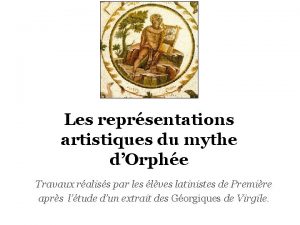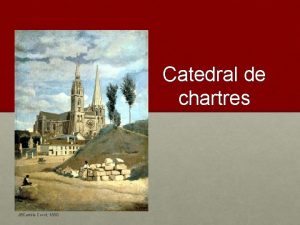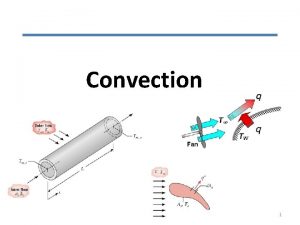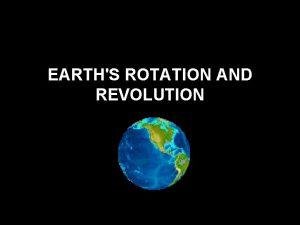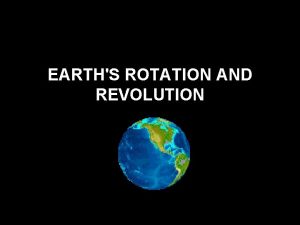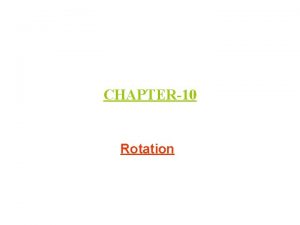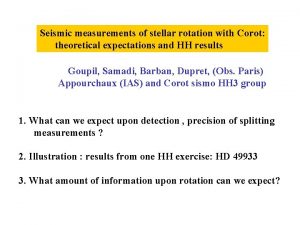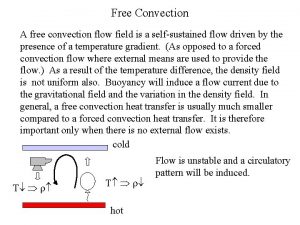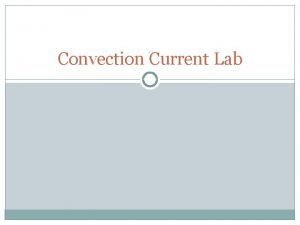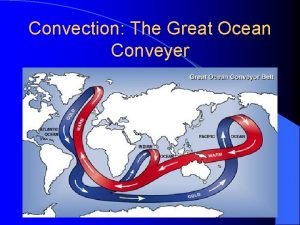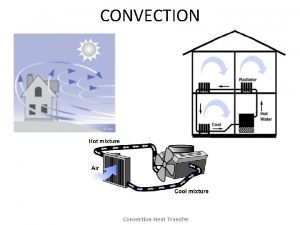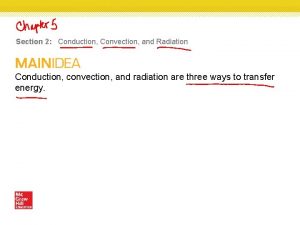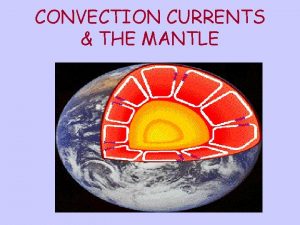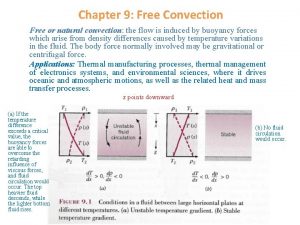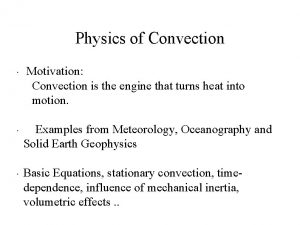COROT COnvection ROtation Transits exoplantaires The Co Ro
























![Object Spect. P (days) Mp (MJup) [M/H] WASP-14 b F 5 V 2. 24 Object Spect. P (days) Mp (MJup) [M/H] WASP-14 b F 5 V 2. 24](https://slidetodoc.com/presentation_image/03b3d893866f603a3af7a91032a839ca/image-25.jpg)






- Slides: 31

COROT, COnvection, ROtation & Transits exoplanétaires The Co. Ro. T mission and Brown Dwarfs Malcolm Fridlund

COROT: §S/C 4. 2 m x 1. 9 m x 9. 6 m, 650 kg, 530 w §Payload § Co. Ro. Tel, afocal, 27 cm aperture, Baffle § Co. Ro. Tcam, dioptric, 4 CCD frame transfer 2048 x 4096 §Co. Ro. Tcase, electronics box § Short observing runs (20 d -- 60 days) on asteroseismology fields § Up to 150 days on exo-fields

Objectives COROT has two design objectives: - Searching for planets of a type similar to our own Earth - Studying the inner parts of stars by measuring the changes in light output caused by acoustical sound waves travelling through the star. COROT is essentially a very precise light-meter (photometer). COROT have measured changes in stellar flux of better than 1 part in 1 000! Can discriminate between colors ==> COROT can tell what the cause of variations in stellar flux is: a) Intrinsic changes caused by activity or by waves travelling through the star b) Occultations by a (small) planetary body passing in front of the star

• • Light curve analysis: Solve for 5 unknown parameters: M*, R*, a, i and Rp M* 1/3 / R* with 4 equations from the light curve and Kepler’s 3: rd law Rp/R* = (DF)1/2 = ((Fno transit – Ftransit) / Fno transit)1/2 Kepler’s third law, the transit shape and transit duration a, i, M* Rp Under the following assumptions: – – – Planet orbit is circular (tend to be true for Co. Ro. T objects) Mp << M* Stellar mass-radius relation is known (hmmm) No ‘blends’ Planet has to enter fully the stellar disk (flat bottom LC) and a good period can be determined from the LC (long enough non-interupted lc which is the point with Co. Ro. T). e. g. Seager & Mallen-Ornelas, Ap. J. , 585, 1038, 2003

Launched 27 Dec 2006; Operated since 15 Feb, 2007; About 80000 light curves acquired;





Status – First we observed UFO’s Both US ex-rockets and Chinese exsatellites…. Now, forget asteroseismology….

How Co. Ro. T planet detection works… observations data reduction Follow-up transit candidate list observations basic data reduction transit alarm! Follow-up Preliminary candidate list observations Confirmed planets (large planets!) Giant (and even small ones) planets can be detected already in „alarm mode“! Confirmed planets

Close-in giant objects can be discovered in „alarm mode“ • Very high S/N of data • transit events visible at N 1 level For example: Co. Ro. T-Exo-4 b

„Discovery space“ for Co. Ro. T Transiting planets around variable stars • Observations made during the first „long run“ of Co. Ro. T of 152 days duration • ~369000 flux measurements with 512 s (1. week) and then 32 s sampling • The star shows periodic variation over several days due to surface spots Alonso et al. 2008 The planet: Period: Radius: Mass: The star: Type: Magnitude: Mass: 1. 742996 days 1. 465+/-0. 029 RJup 3. 31+/-0. 16 MJup G 7 V=12. 6 mag 0. 97+/-0. 06 Msun. Folie 13

Small stuff is harder! Raw light curve! Cleaned and normalised Lightcurve of 144 d, demonstrating a rotation period of 2223 d

Extracted light curves in color (top) and white light (bottom)

Lightcurve implies a planet but it can be a background object or a grazing occultation of a binary: Solved by photometry and spectroscopy Photometry from the ground! PSF of 7 b

Spectroscopy of two kinds: Radial Velocities and high s/n, resolution spectrum for stellar parameters Teff Log g [M/H] Vmic V sin i

Results so far About 20 planets/BD’s (2) ‚not many‘ Earth masses – 47 Jupiter masses Periods between 0. 85 and 96 days High eccentricity in one case 5 more high probability targets + About 80 candidates – many to faint for HARPS/ VLT

Number 3! Co. Ro. T-Exo-3 b Looked ‘Jupiter-like’

0. 43% depth Light curve analysis: Solve for 5 unknown parameters: M*, R*, a, I and Rp M* 1/3 / R*

Transit on target! High mass!

Co. Ro. T-Exo-3 b: P: 4. 2568 d r: 1. 01 RJ (0. 07) m: 21. 66 MJ (1. 0) r: 26. 4 g cm-3 (5. 6) log g: 4. 72 (0. 07) The star: F 3 V V = 13. 3 mag Teff = 6740 K V sin i = 17 km s-1 d = 680 pc 1. 37± 0. 09 Mo (lc+models) R* = 1. 56± 0. 09 RO (lc+models) Age = 1. 6 – 2. 8 Gyr Log g = 4. 24± 0. 07 (models+spectra) [M/H] = -0. 02± 0. 06 Deleuil et al, 2008, A&A, 491, 889

Transiting planets p < 10 d

Radius of 3 b is 1 RJ just like theory says! New BD, P ~ 16 d, M ~ 47 MJ F-star ~ 10% (2 out of 20) of planets picked up by Co. Ro. T are BD < 5% of all exo-planets are BD (> 13 MJ) For transiting planets: 5 most massive planets (our 2 + HAT-P-2 b, WASP-14 b and XO 3 b) orbit all around F-stars
![Object Spect P days Mp MJup MH WASP14 b F 5 V 2 24 Object Spect. P (days) Mp (MJup) [M/H] WASP-14 b F 5 V 2. 24](https://slidetodoc.com/presentation_image/03b3d893866f603a3af7a91032a839ca/image-25.jpg)
Object Spect. P (days) Mp (MJup) [M/H] WASP-14 b F 5 V 2. 24 7. 7 0± 0. 2 HAT-P-2 F 8 5. 63 9. 09 0. 14± 0. 08 WASP-18 b F 9 0. 94 10. 3 0± 0. 09 XO-3 b F 5 V 3. 19 11. 8 -0. 17± 0. 08 Co. Ro. T-3 b F 3 V 4. 26 21. 66± 1. 0 -0. 02± 0. 06 Co. Ro. T-? F 15. 9 ~ 47 ?

What now? - Co. Ro. T continues – probably for another 3 years but with half the FOV. - KEPLER has produced its first results. Demonstrates that they can detect 1 Earth radii. With this sensitivity, and their RV program they are going to pick up ~ same number of BD’s as Co. Ro. T


The End Public data: http: //idoc-corot. ias. u-psud. fr/

Summary: 1. Co. Ro. T have fulfilled design goals by discovering 7 b 2. So far ~10 confirmed planets published or very close 3. Activity of stars is a surprise. Many objects turn out metal poor 4. Sun is not a ’normal, average’ star?

5. Amount of follow-up observations underestimated – take significant effort and time. HARPS currently only instrument in the world that can detect Earth mass planets in RV 6. Will we find Earth-size planets soon? Yes! - Co. Ro. T, Kepler, microlensing, etc 7. Will we be able to confirm them soon? No! - not around solar analogue stars except in exceptional cases (non-HZ orbits)

The „first 4“! Co. Ro. T-Exo-1 b Co. Ro. T-Exo-2 b: P: 1. 742996 d r: 1. 465 RJ m: 3. 31 MJ The star: K 0 V V=12. 6 mag Co. Ro. T-Exo-1 b: P: 1. 5089557 d r: 1. 49 RJ m: 1. 03 MJ The star: G 0 V V = 13. 6 mag Barge et al. 2008 Co. Ro. T-Exo-3 b: P: 4. 2568 d r: 1. 01 RJ m: 21. 66 MJ Co. Ro. T-Exo-3 b Alonso et al. 2008 Co. Ro. T-Exo-4 b: P: 9. 20205 d r: 1. 19 RJ m: 0. 72 MJ The star: F 0 V V=13. 7 mag The star: G 0 V V = 13. 3 mag Deleuil et al. 2008 Agrain et al. and Moutou et al. 2008
 Optical rotation slideshare
Optical rotation slideshare Cuento coryo
Cuento coryo Ary scheffer la mort d'eurydice
Ary scheffer la mort d'eurydice Catedral de chartres corot
Catedral de chartres corot Catedral de chartres corot
Catedral de chartres corot Lycee morestel
Lycee morestel Tư thế ngồi viết
Tư thế ngồi viết Thế nào là hệ số cao nhất
Thế nào là hệ số cao nhất Thứ tự các dấu thăng giáng ở hóa biểu
Thứ tự các dấu thăng giáng ở hóa biểu Thẻ vin
Thẻ vin Lp html
Lp html Thể thơ truyền thống
Thể thơ truyền thống Các châu lục và đại dương trên thế giới
Các châu lục và đại dương trên thế giới Sự nuôi và dạy con của hổ
Sự nuôi và dạy con của hổ Từ ngữ thể hiện lòng nhân hậu
Từ ngữ thể hiện lòng nhân hậu Diễn thế sinh thái là
Diễn thế sinh thái là Vẽ hình chiếu vuông góc của vật thể sau
Vẽ hình chiếu vuông góc của vật thể sau Chụp phim tư thế worms-breton
Chụp phim tư thế worms-breton 101012 bằng
101012 bằng Lời thề hippocrates
Lời thề hippocrates đại từ thay thế
đại từ thay thế Bổ thể
Bổ thể Quá trình desamine hóa có thể tạo ra
Quá trình desamine hóa có thể tạo ra Công thức tiính động năng
Công thức tiính động năng Khi nào hổ con có thể sống độc lập
Khi nào hổ con có thể sống độc lập Thế nào là mạng điện lắp đặt kiểu nổi
Thế nào là mạng điện lắp đặt kiểu nổi Dạng đột biến một nhiễm là
Dạng đột biến một nhiễm là Thế nào là sự mỏi cơ
Thế nào là sự mỏi cơ Vẽ hình chiếu đứng bằng cạnh của vật thể
Vẽ hình chiếu đứng bằng cạnh của vật thể Hát lên người ơi alleluia
Hát lên người ơi alleluia Phản ứng thế ankan
Phản ứng thế ankan Thiếu nhi thế giới liên hoan
Thiếu nhi thế giới liên hoan


